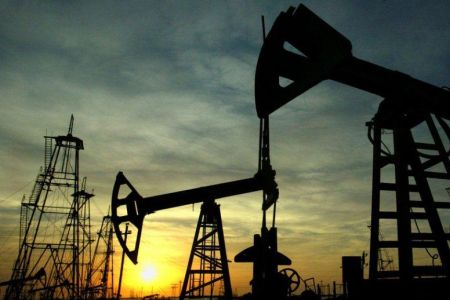Iran outpaces UAE and Oman tapping joint oilfields

Iran has outpaced the United Arab Emirates and Oman in tapping the Hengam and Salman joint oilfields, the managing director of Iranian Offshore Oil Company (IOOC) has said.
Iran is currently extracting 23,000 barrels of oil from the Hengam field which is three times more than Oman, Mehr news agency quoted Mahmoud Zirakchianzadeh as saying.
The amount would be raised up to 30,000 barrels in the next three months, he added.
The Hengam oil field is located about 45 km off Iran's Qeshm Island in the Persian Gulf and straddles the common sea border with Oman. Since the beginning of its development this oil field has yielded about five million barrels of light crude oil.
Zirakhchianzadeh went on to note that Iran's share of extracting oil from the Salman field is also twice more than the United Arab Emirates. He didn't mention the exact amount of extraction.
Iran's total oil extraction from its joint oilfields in the Persian Gulf (excluding the oil layer of South Pars gas field) has been doubled in the past 12 months, Zirakhchianzadeh explained.
It is while Majlis Research Centre reported on January 28 that
the total extraction volume of Iran's neighbours from the joint oil
and gas fields is currently nine times more than Tehran's
share.
Iran shares 28 oil and gas fields with neighbouring countries.
Tehran also claims to have another joint oilfield with Iraq.
In the Persian Gulf region, Iran has 15 joint oil and gas fields with the United Arab Emirates, Saudi Arabia, Qatar, Oman and Kuwait.
United Arab Emirates' share of the joint fields is currently 136,000 barrels of oil per day, while Iran only extracts 56,000 barrels daily.
Saudi Arabia also extracts 450,000 barrels of oil from the joint fields, while Iran's share stands at 42,000 barrels.
Iran's main problem is the giant South Pars gas field. South Pars is part of a wider gas field that is shared with Qatar. The larger field covers an area of 9700 square kilometres, 3700 square kilometres of which are in Iran's territorial waters (South Pars) in the Persian Gulf. The remaining 6000 square kilometres, referred to as the North Dome, are in Qatar's territorial waters.
The Iranian gas field contains 14 trillion cubic meters of natural gas which is about eight per cent of the world's reserves and more than 18 billion barrels of LNG resources.
Doha's gas pump currently is double that of Iran, while its extraction share from the fields oil layer is 13 times more than Tehran.
Iran is currently producing around 285 mcm per day of gas and 35,000 barrels of oil from South Pars. It is while Qatar extracts some 450,000 barrels of oil from the gas field's oil layer.
Iranian President Mahmoud Ahmadinejad had said the gas field's production capacity would reach 480 mcm by September, equalling Iran and Qatar's pace of tapping the joint gas field.
Iran has extracted 500 billion cubic meters of gas from South Pars over the course of 15 years.
Qatar announced last year that its total gas extraction from the field reached one trillion cubic meters.
Thanks to extracting gas from the joint field, Qatar is currently the world's largest LNG exporter. Its annual LNG exports stands at 77 million tons.
Due to the US-generated sanctions against Iran's oil and gas sector, giant foreign companies have left the country's energy projects. This has caused severe problems for Iran in regards to developing joint oil and gas fields.
Some of the phases of the South Pars gas field are way behind schedule. For example, the development plan of five phases of Iran's giant South Pars gas field (phases 15-18 and phase 12) has entered its 66th month. These phases were supposed to come on stream by the end of the current Iranian year (March 20) but none of them is completed yet.
The Majlis Research Centre's report claims that some countries have been tapping joint oil and gas fields without signing the required memorandums of understanding. The report also accuses some of the states of delaying the negotiations in order to continue extraction of oil and gas. Tehran believes that these governments should be fined by international courts.
Iranian oil minister Rostam Qasemi said in June, 2012 that Tehran attached a priority to boosting gas production capacity from its joint oilfields with Qatar and Saudi Arabia.
The country which sits on the world's second largest natural gas reserves after Russia , has been trying to enhance its gas production by increasing foreign and domestic investments.
Here we are to serve you with news right now. It does not cost much, but worth your attention.
Choose to support open, independent, quality journalism and subscribe on a monthly basis.
By subscribing to our online newspaper, you can have full digital access to all news, analysis, and much more.
You can also follow AzerNEWS on Twitter @AzerNewsAz or Facebook @AzerNewsNewspaper
Thank you!
